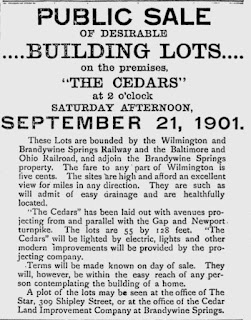 |
| Stanton School, 1926 |
By the mid to late 19th Century, Mill Creek Hundred contained all or part of at least 17 separate school districts. Each district contained one school, and at least 13 of those schools were situated within the boundaries of the hundred. We've already looked at a few of them (
Harmony,
Fairview,
Mt. Pleasant and Union), and even at a
few of the teachers. As the 20th Century progressed, these old districts and schools were eventually consolidated into larger ones, and many of the schoolhouses lost. In this post, we'll focus on two more of these schools, each representing old districts -- the Stanton School (District #38) and the Brandywine Springs School (District #33). Both of these today have "descendant" schools still in operation, and one of these old schools (although not the first one at the site) is still serving its community, albeit in another capacity.
The District #38 school in Stanton was undoubtedly one of the longest-serving schools in our area. It was your classic one-room schoolhouse, made of stone, and measuring about 30x27 feet. It had two outhouses (which sometimes needed to be emptied, as
this 1886 report shows), and stood on the north side of Main Street, west of Limestone Road, about halfway between the Friends Meeting House and Telegraph Road (about where the Goodeals is now). Exactly when it was built is a bit of a mystery. The number "38" does appear on the
1849 Rea & Price map (although, oddly, there is no "S.H." as there is by the other school houses), so it was surely built by then. Scharf claims that it was the first public school in Mill Creek Hundred, which would probably put its erection sometime around 1829, when the first real public school act in the state was passed. Writing in 1888, to Scharf it was already the "old stone school-house".



